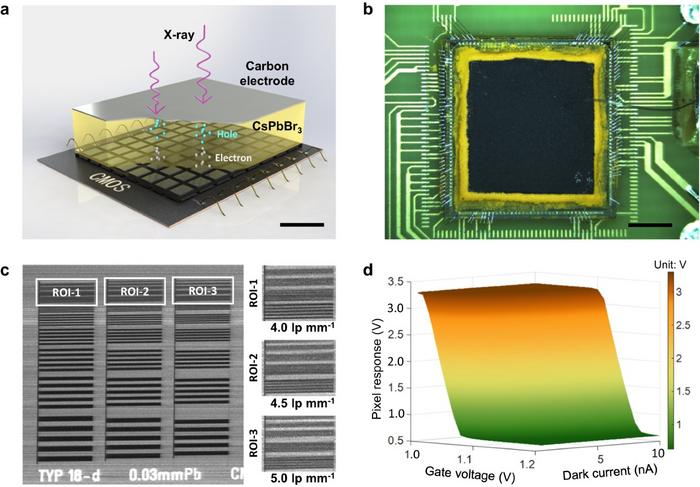Study Uncovers How Nymphaeol A, a Propolis Compound with Health Benefits, Interacts with Cell Membranes
A groundbreaking computational study led by Professor José Villalaín from the Miguel Hernández University of Elche (UMH) delivers an unprecedented insight into the molecular behavior of nymphaeol A, a potent bioactive compound derived from propolis. This resinous substance, produced by honeybees, has been revered for centuries in traditional medicine, particularly across Asia, for its therapeutic […]


A groundbreaking computational study led by Professor José Villalaín from the Miguel Hernández University of Elche (UMH) delivers an unprecedented insight into the molecular behavior of nymphaeol A, a potent bioactive compound derived from propolis. This resinous substance, produced by honeybees, has been revered for centuries in traditional medicine, particularly across Asia, for its therapeutic properties. By deploying advanced molecular dynamics simulations, Villalaín’s research substantially enhances our understanding of how nymphaeol A interacts with and alters the architecture of complex biological membranes, unveiling mechanisms that could explain its extensive biological activities, including antioxidant and anticancer effects.
Nymphaeol A is not only a principal constituent of propolis but is also extracted from Macaranga tanarius, a tropical tree commonly known as parasol leaf macaranga, traditionally utilized in Asian herbal therapies. Previous pharmacological investigations have acknowledged the molecule’s impressive antioxidant capacity, antimicrobial activity, and anticancer potential. However, the precise molecular interactions underpinning these bioactivities remain ambiguous largely due to the challenges in experimentally examining molecular dynamics within natural cellular membranes. The current study bridges this gap using cutting-edge computational methods to simulate the behavior of nymphaeol A within membrane environments akin to those found in human cells.
Professor Villalaín utilized molecular dynamics simulations to model the spontaneous insertion and dynamic behavior of nymphaeol A in heterogeneous lipid bilayers, which mimic the complexity of mammalian cellular membranes. This computational approach enabled a highly detailed visualization of the compound’s conformation and mobility at the lipid-water interface. The simulations revealed that nymphaeol A preferentially adopts an extended conformation post-insertion, optimizing its spatial occupancy within the acyl chain region of the membrane. Such strategic positioning facilitates favorable interactions with the lipid milieu, which is critical for modulating membrane properties and downstream biological effects.
.adsslot_oLgrvT0q5H{ width:728px !important; height:90px !important; }
@media (max-width:1199px) { .adsslot_oLgrvT0q5H{ width:468px !important; height:60px !important; } }
@media (max-width:767px) { .adsslot_oLgrvT0q5H{ width:320px !important; height:50px !important; } }
ADVERTISEMENT
Interestingly, the simulations illuminated that while nymphaeol A primarily exists as isolated monomeric units within the lipid bilayer, it can occasionally form small, transient aggregates. These aggregate formations suggest a complexity in behavior that could influence both membrane perturbation and signaling pathways. The compound’s insertion and aggregation create subtle but meaningful alterations in the bilayer’s physical state, including an increase in membrane fluidity and flexibility. Enhanced fluidity may contribute to improved cellular membrane resilience and functionality, potentially underpinning the antioxidant and protective effects attributed to nymphaeol A.
Membrane fluidity is a fundamental biophysical parameter influencing various cellular processes, including membrane protein function, signal transduction, and vesicular trafficking. The observed fluidity modulation by nymphaeol A implies a possible mechanism by which this compound facilitates its therapeutic effects, potentially by modulating membrane-associated proteins or enzymatic activities. The ability of nymphaeol A to navigate and influence the lipid environment signifies an intricate biomolecular recognition phenomenon, which the study robustly characterizes through quantitative and qualitative simulation outputs.
This work not only sheds light on the intrinsic properties of nymphaeol A but also validates the broader applicability of molecular dynamics simulations as a tool for probing bioactive natural compounds within membranous systems. Such computational techniques circumvent the limitations of traditional experimental methodologies, which often struggle to capture transient and nanoscale molecular events in situ. Villalaín’s research exemplifies how detailed atomistic simulations can be harnessed to reveal dynamic molecular interactions, fostering new pathways for drug discovery and design.
Crucially, the findings propose that the bioactivity of nymphaeol A might stem from its capacity to modulate lipid packing and membrane microdomains subtly. These membrane modifications may enhance the compound’s accessibility or affinity for membrane-bound proteins or receptor sites involved in oxidative stress responses or apoptotic pathways. As such, the compound may exert pleiotropic effects via membrane remodeling, positioning nymphaeol A as a promising scaffold for developing novel therapeutics targeting membrane-related diseases, including cancer and microbial infections.
The research also encourages a reevaluation of traditional medicines containing nymphaeol A or propolis, providing molecular-level evidence supporting their efficacy and inviting integration with contemporary biomedical frameworks. By correlating molecular behavior with pharmacological effects through simulation, the study builds a foundation for rationalizing and optimizing natural compound-based therapeutics, potentially accelerating their clinical translation.
Moreover, Villalaín’s investigation sets a precedent for future computational modeling to analyze other bioactive molecules with complex membrane interactions that are challenging to study experimentally. Such research could revolutionize how scientists approach natural product pharmacology, merging traditional knowledge with state-of-the-art technology to decode molecular mechanisms that govern health benefits.
The publication of this study on the June cover of the journal Membranes emphasizes its significance in membrane biophysics and computational biology. It highlights the value of integrating multidisciplinary approaches to decipher the subtleties of biomolecular interactions and their relevance to cellular function and disease treatment.
By illuminating the dynamic landscape of nymphaeol A within biological membranes, this research advances our molecular understanding of alternative and folk medicines, encouraging a fusion of computational innovation with natural product chemistry for next-generation biomedical applications.
Subject of Research: Not applicable
Article Title: Location and Dynamics of Nymphaeol A in a Complex Membrane
News Publication Date: 28-May-2025
Web References: https://www.mdpi.com/2077-0375/15/6/163
References: Villalaín, J. (2025), Membranes, 15(6)
Image Credits: Villalaín, J. (2025), Membranes, 15(6)
Keywords: Bioactive compounds, Biomolecules, Biomolecular recognition, Membrane biophysics, Computational biology, Molecular biology, Alternative medicine, Folk medicine
Tags: anticancer effects of propolisantioxidant properties of nymphaeol Abioactivity of natural compoundscell membrane architecturecellular membrane dynamicscomputational study on bioactive compoundsMacaranga tanarius medicinal usesmolecular dynamics simulationsNymphaeol A interactionspharmacological investigations of nymphaeol Apropolis health benefitstraditional medicine in Asia
What's Your Reaction?


































